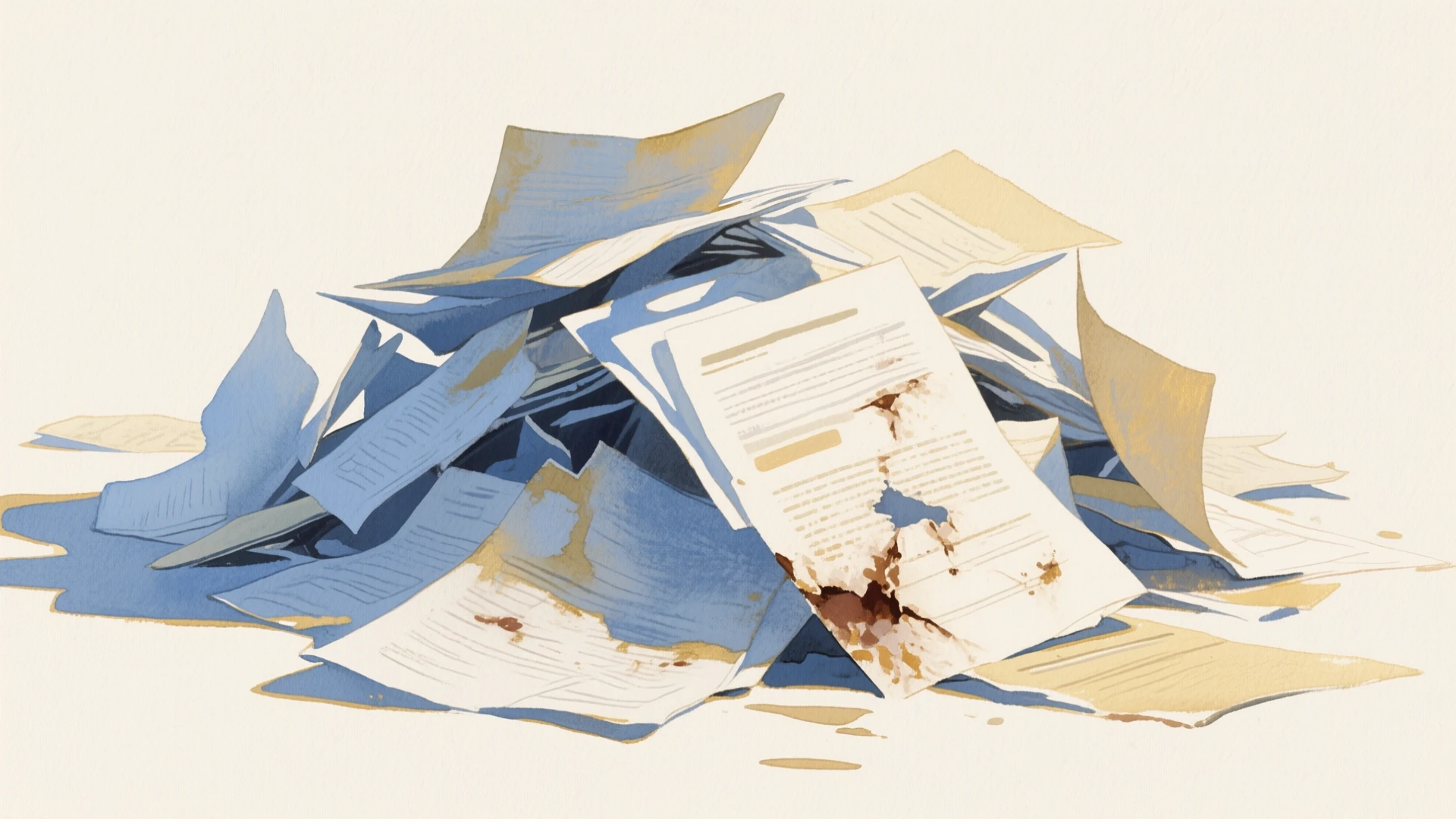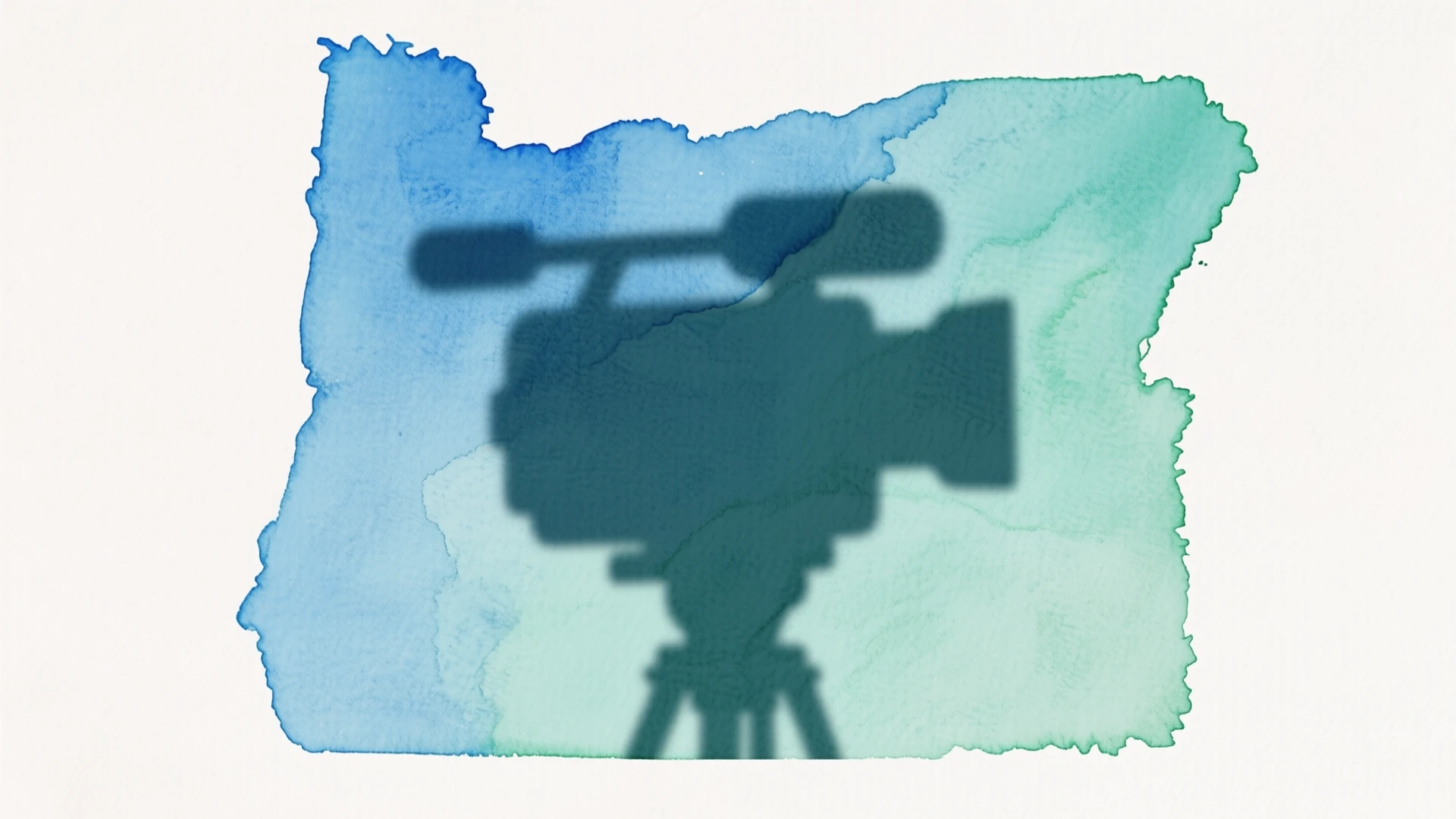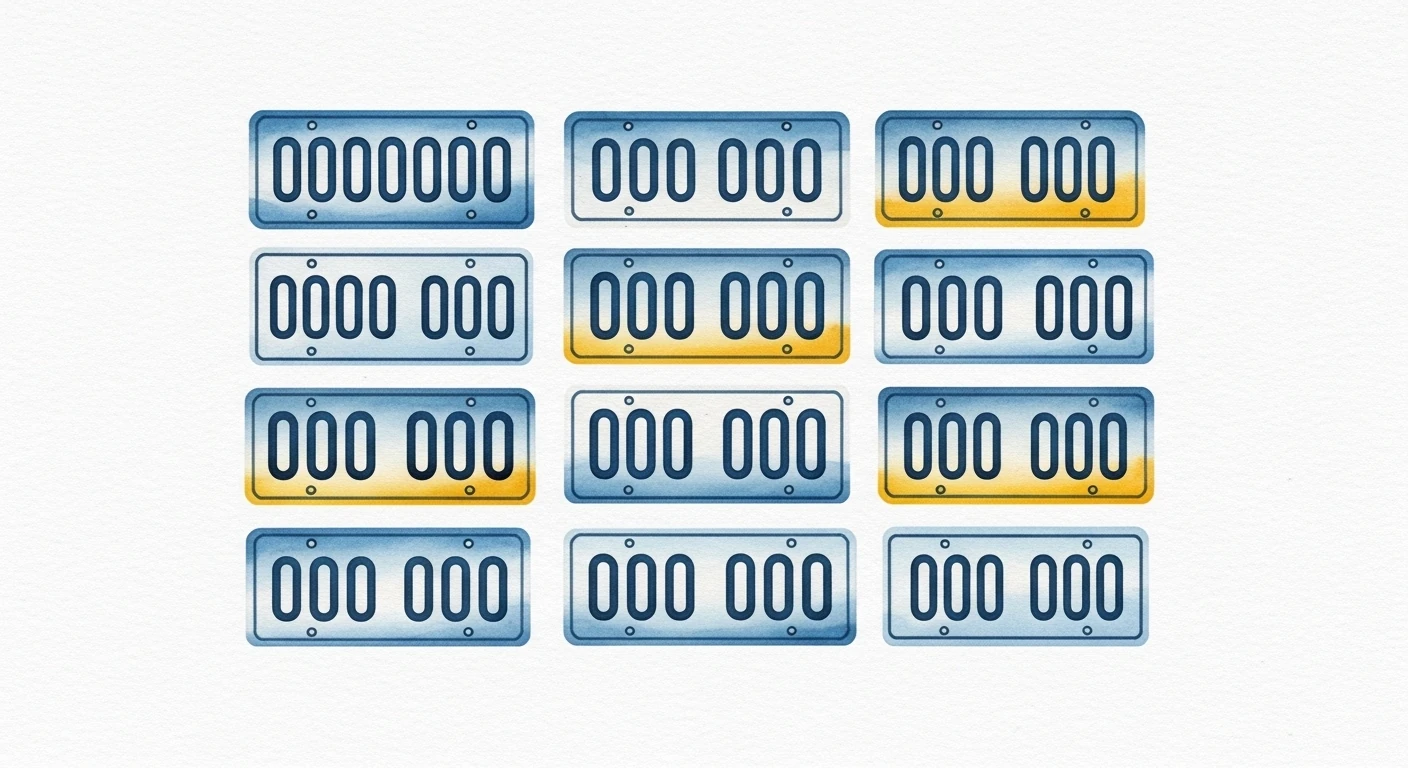Don't Lose Your Evidence: Understanding Spoliation in Personal Injury Cases

Don’t Lose Your Evidence: Understanding Spoliation in Personal Injury Cases
TL;DR
- Spoliation = destroying, altering, or losing evidence you have a duty to preserve
- When duty begins: As soon as you reasonably anticipate a lawsuit or legal claim
- Consequences: Courts can impose sanctions, assume destroyed evidence was harmful to your case, or even dismiss claims
- Digital evidence: Dash cam footage, phone photos, and electronic data need special preservation protocols
- Critical first steps: Stop all auto-delete functions, make copies, document everything
What Is Spoliation of Evidence?
Spoliation occurs when someone destroys, alters, or fails to preserve evidence that they have a legal duty to maintain. In personal injury cases, this can happen accidentally or intentionally, but the consequences are the same—it can seriously damage your case.
The Legal Definition
Courts generally define spoliation as the destruction or significant alteration of evidence, or the failure to preserve property for another’s use as evidence in pending or reasonably foreseeable litigation.
Key elements:
- Duty to preserve evidence existed
- Breach of that duty occurred (evidence was destroyed, altered, or lost)
- Resulting prejudice to the opposing party
When the Duty to Preserve Begins
The duty to preserve evidence typically begins when:
- An accident occurs and injuries result
- You reasonably anticipate filing a legal claim
- You receive notice of a potential lawsuit
- Litigation is formally commenced
Critical point: The duty often begins immediately after an accident, not when you formally file a lawsuit.
Common Types of Evidence Spoliation
Digital Evidence Spoliation
Dash cam footage:
- Automatic overwrite loops delete crucial clips
- Memory cards get reformatted or corrupted
- Footage edited or trimmed improperly
Smartphone evidence:
- Photos automatically deleted by cloud storage limits
- Text messages cleared from memory
- Location data disabled or erased
Vehicle computer data:
- Event data recorders (EDR) overwritten
- Diagnostic codes cleared during repairs
- Infotainment system data lost during service
Physical Evidence Destruction
Vehicle damage:
- Cars repaired or totaled before proper documentation
- Parts replaced without preserving originals
- Paint transfer or impact evidence lost
Scene evidence:
- Skid marks fade or get cleaned
- Road damage repaired quickly
- Surveillance systems overwrite footage
Medical evidence:
- X-rays discarded after treatment
- Medical devices replaced or disposed
- Treatment records lost or destroyed
Document Spoliation
- Insurance correspondence deleted
- Medical records destroyed per retention policies
- Employment records purged
- Financial documents discarded
Legal Consequences of Spoliation
Adverse Inference Instruction
Courts may instruct juries to assume the destroyed evidence would have been unfavorable to the party who destroyed it. This is often the most damaging consequence.
Example: If you delete dash cam footage, the jury might be told to assume the footage showed you were at fault.
Evidentiary Sanctions
- Exclusion of evidence: Related evidence may be deemed inadmissible
- Limited testimony: Witnesses may be restricted in what they can say
- Burden shifting: The spoliating party may have to prove their innocence rather than the other side proving fault
Monetary Sanctions
Courts can order the spoliating party to:
- Pay the opposing party’s attorney fees
- Cover costs of attempting to recover lost evidence
- Pay additional damages for prejudice caused
Case Dismissal
In extreme cases involving intentional spoliation or bad faith destruction, courts may:
- Dismiss the spoliating party’s claims
- Enter default judgment against them
- Strike pleadings or defenses
Digital Evidence: Special Preservation Challenges
Automatic Deletion Systems
Many digital systems automatically delete data:
- Dash cams: Loop recording overwrites old footage
- Cloud storage: Auto-deletes to manage storage limits
- Security systems: Overwrite after set periods
- Phone apps: Clear data automatically
Solution: Immediately disable auto-delete functions after an accident.
Data Integrity Issues
Digital evidence faces unique challenges:
- Metadata preservation: Time stamps and location data can be altered
- Chain of custody: Multiple copies need tracking
- File corruption: Data can become damaged or unreadable
- Format obsolescence: Technology changes can make files inaccessible
Best Practices for Digital Preservation
- Immediate action: Stop all automatic deletion/overwrite functions
- Multiple copies: Create copies on different storage media
- Hash verification: Use checksums to verify file integrity
- Metadata preservation: Keep original file creation data intact
- Professional help: Consider forensic data recovery specialists
Step-by-Step Evidence Preservation Protocol
Immediate Actions (First 24 Hours)
Digital evidence:
- Lock/protect all recordings using device controls
- Remove power from dash cams to prevent overwriting
- Save phone photos/videos to multiple locations
- Screenshot text messages and social media posts
- Disable auto-delete on all devices and apps
Physical evidence:
- Photograph everything from multiple angles
- Document vehicle damage before moving cars
- Collect debris and physical evidence at scene
- Note weather conditions and lighting
- Identify witnesses and get contact information
First Week Actions
Create backup systems:
- Copy digital files to multiple storage devices
- Upload to secure cloud storage with retention controls
- Create checksums (digital fingerprints) of all files
- Document chain of custody for all evidence
- Organize files with clear naming conventions
Preserve physical evidence:
- Store damaged items in secure, dry location
- Photograph healing injuries regularly
- Keep all medical records and bills
- Save receipts for all accident-related expenses
- Document ongoing symptoms in writing
Ongoing Preservation
Regular maintenance:
- Check backup integrity monthly
- Update storage systems before they become obsolete
- Maintain access to all digital files
- Document any changes or access to evidence
- Communicate with attorneys about evidence status
Common Preservation Mistakes to Avoid
Accidental Destruction
Auto-overwrite systems: Forgetting to disable dash cam loop recording Cloud storage limits: Letting automatic deletion remove crucial photos Device updates: Software updates that clear app data Repair decisions: Fixing vehicles before documenting damage
Inadequate Documentation
Poor chain of custody: Not tracking who accessed evidence when Missing metadata: Losing creation dates and location information Incomplete copies: Partial backups that miss crucial data No verification: Failing to confirm copies are complete and accurate
Premature Disposal
Settlement assumptions: Throwing away evidence after initial settlement discussions Insurance pressure: Disposing of damaged property at insurer’s request Storage costs: Getting rid of evidence to save storage expenses Time passage: Assuming old evidence is no longer relevant
Industry-Specific Considerations
Commercial Vehicles
- Fleet management systems often overwrite data quickly
- Electronic logging devices (ELD) have limited retention periods
- GPS tracking data may be purged automatically
- Maintenance records crucial for mechanical failure claims
Rideshare and Delivery
- Driver apps track location and timing data
- Customer communications may contain relevant information
- Platform policies for data retention vary widely
- Independent contractor status affects evidence duties
Motorcycle and Bicycle Accidents
- Helmet cameras have limited storage capacity
- Fitness apps may track speed and route data
- Social media posts about rides can be relevant
- Equipment failure evidence needs immediate preservation
Working with Attorneys on Evidence Preservation
When to Contact Legal Counsel
Consider consulting an attorney immediately if:
- Injuries are serious or potentially permanent
- Fault is disputed or unclear
- Multiple parties are involved
- Commercial vehicles or businesses are involved
- Evidence is at risk of being lost or destroyed
What Attorneys Can Do
Legal holds: Formal notices requiring evidence preservation Discovery requests: Compelling other parties to preserve evidence Expert assistance: Arranging professional data recovery or analysis Court protection: Seeking judicial orders for evidence preservation
Client Responsibilities
Even with legal representation, clients must:
- Follow preservation instructions carefully
- Report any evidence issues immediately
- Maintain secure storage of physical evidence
- Avoid discussing evidence on social media
Technology Solutions for Evidence Management
Specialized Software
Evidence management systems:
- Chain of custody tracking
- Automated backup schedules
- Access control and audit trails
- File integrity verification
Cloud storage solutions:
- Legal hold capabilities
- Unlimited retention options
- Advanced security features
- Multi-platform accessibility
Professional Services
Digital forensics firms:
- Data recovery from damaged devices
- Forensic imaging of storage media
- Expert testimony about digital evidence
- Chain of custody documentation
Private investigation services:
- Scene documentation and analysis
- Witness location and interviewing
- Surveillance footage acquisition
- Expert accident reconstruction
Prevention Strategies
Before Accidents Happen
Technology preparation:
- Configure devices for maximum retention
- Understand auto-delete settings on all apps
- Set up backup systems for important data
- Know your insurance evidence requirements
- Plan evidence protocols for family members
Education and training:
- Learn preservation basics for your situation
- Practice evidence collection procedures
- Understand legal obligations in your state
- Keep emergency contacts for legal help
- Review insurance policies for evidence clauses
After Minor Incidents
Even minor accidents can escalate, so:
- Preserve everything initially—you can’t recreate lost evidence
- Document thoroughly—details forgotten quickly
- Get legal advice before disposing of anything
- Maintain storage systems until claims are fully resolved
State-Specific Considerations
Oregon and Washington
Both states recognize spoliation claims and remedies:
- Oregon: Courts have broad discretion in imposing sanctions
- Washington: Strong precedent for adverse inference instructions
- Federal court: May apply different standards in diversity cases
Statutory Requirements
Some types of evidence have specific legal requirements:
- Medical records: HIPAA compliance affects preservation
- Employment records: State laws govern retention periods
- Business records: Regulatory requirements may mandate preservation
Red Flags: When Spoliation Might Be Occurring
Watch for these warning signs from other parties:
Insurance companies:
- Pressure to settle quickly before evidence review
- Requests to dispose of damaged property immediately
- Claims that evidence is “not relevant” to the case
Opposing parties:
- Delays in producing requested evidence
- Claims that evidence was “accidentally” destroyed
- Inconsistent stories about evidence availability
Businesses:
- Standard policies of quick evidence destruction
- Resistance to preserving video surveillance
- Claims that data retention is “too expensive”
Recovery Options When Evidence Is Lost
Digital Recovery Techniques
Even “deleted” digital evidence may be recoverable:
- File system recovery: Undelete tools for recent deletions
- Forensic imaging: Deep recovery from storage devices
- Cloud backups: Automatic backups may preserve data
- Service provider data: Third parties may retain copies
Alternative Evidence Sources
When primary evidence is lost, consider:
- Third-party recordings: Other vehicles’ dash cams, security cameras
- Public records: Traffic camera footage, 911 call records
- Expert reconstruction: Using physical evidence to recreate events
- Witness testimony: People who saw or documented the incident
The Bottom Line on Evidence Preservation
Start immediately: Evidence preservation begins the moment an accident happens Document everything: More is better when it comes to evidence Get help: Serious cases require professional assistance Stay vigilant: Evidence can be lost accidentally even with good intentions Think long-term: Legal cases can take years to resolve
Remember: You can’t “un-lose” evidence. Once it’s gone, it’s typically gone forever. The time and effort spent preserving evidence immediately after an accident is always worthwhile—even if you ultimately don’t need to use it in litigation.
Evidence preservation isn’t just about following rules; it’s about protecting your ability to tell your story accurately and completely when it matters most.
This information is for educational purposes only and should not be considered legal advice. Evidence preservation requirements can vary significantly based on jurisdiction, case type, and specific circumstances. For guidance on your specific situation, consult with a qualified attorney experienced in personal injury litigation.



